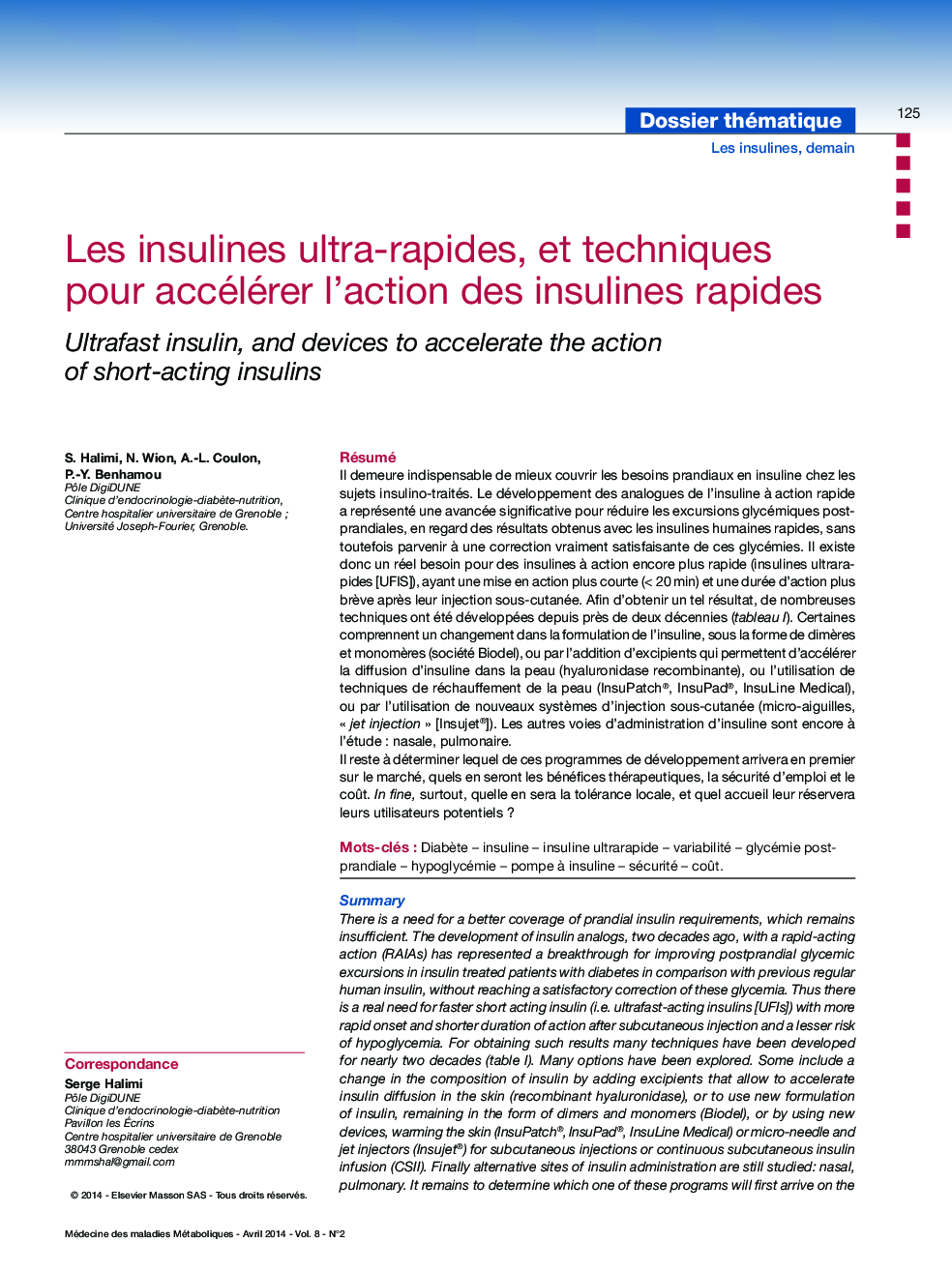| Article ID | Journal | Published Year | Pages | File Type |
|---|---|---|---|---|
| 3274353 | Médecine des Maladies Métaboliques | 2014 | 8 Pages |
Abstract
There is a need for a better coverage of prandial insulin requirements, which remains insufficient. The development of insulin analogs, two decades ago, with a rapid-acting action (RAIAs) has represented a breakthrough for improving postprandial glycemic excursions in insulin treated patients with diabetes in comparison with previous regular human insulin, without reaching a satisfactory correction of these glycemia. Thus there is a real need for faster short acting insulin (i.e. ultrafast-acting insulins [UFIs]) with more rapid onset and shorter duration of action after subcutaneous injection and a lesser risk of hypoglycemia. For obtaining such results many techniques have been developed for nearly two decades (table I). Many options have been explored. Some include a change in the composition of insulin by adding excipients that allow to accelerate insulin diffusion in the skin (recombinant hyaluronidase), or to use new formulation of insulin, remaining in the form of dimers and monomers (Biodel), or by using new devices, warming the skin (InsuPatch®, InsuPad®, InsuLine Medical) or micro-needle and jet injectors (Insujet®) for subcutaneous injections or continuous subcutaneous insulin infusion (CSII). Finally alternative sites of insulin administration are still studied: nasal, pulmonary. It remains to determine which one of these programs will first arrive on the market and what will be their safety and costs. Ultimately what will be the real benefit of these innovations for the patients, and their local tolerance and patients' acceptance.
Keywords
Related Topics
Health Sciences
Medicine and Dentistry
Endocrinology, Diabetes and Metabolism
Authors
S. Halimi, N. Wion, A.-L. Coulon, P.-Y. Benhamou,
